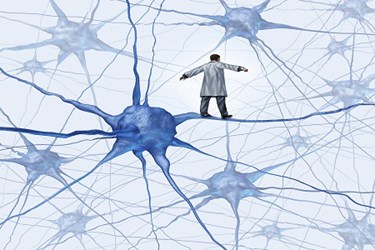JH Team IDs Genetic Variant Linked To Schizophrenia Risk

A research team from the Johns Hopkins University School of Medicine reported that they have identified a new genetic variant that could explain why some people have a predisposition to the mental disorder schizophrenia.
Neuropsychiatric disorders such as autism and schizophrenia are believed to be caused in part by defects in brain development. While these variants may increase risk of disorder development, they are not capable of causing the diseases themselves. Using a multi-faceted approach, the scientists set out to find why 15q11.2 copy number variants in particular are prominent risk factors for schizophrenia and autism.
The scientists discovered that deletion of the part of the genome labeled 15q11.2 is linked with increased risk of schizophrenia. On the other hand, possessing extra copies of the number variants resulted in a higher risk for autism.
Using a method that enables a patient’s skin cell to be reprogrammed into induced pluripotent stem cells (iPSCs) — which can be manipulated into forming any other type of cell — the researchers took stem cells from people with schizophrenia who lacked part of 15q11.2 on one of their chromosomes. These were manipulated into forming neural progenitor cells similar to those found in the developing brain. Deficiencies during nerve development were found to be linked to the gene CYFIP1 which is responsible for maintaining the nerve cell structure. Blocking the expression of this gene in developing mouse embryos resulted in defects in the formation of the brain’s cerebral cortex.
CYFIP1 plays a role in structuring each nerve cell’s skeleton and its loss affected adherens junctions where neighboring cells connect. “During development, new neurons get in place by ‘climbing’ the tendrils of neural progenitor cells. We think that disrupted adherens junctions don’t provide a stable enough anchor for neural progenitors, so the ‘rope’ they form doesn’t quite get new neurons to the right place,” said senior author Dr. Guo-li Ming, professor of neurology and neuroscience in the Johns Hopkins University School of Medicine’s Institute for Cell Engineering.
Furthermore, the team found that mutations in a pair of genes within a specific cellular pathway linked to CYFIP1 increased the risk of developing Schizophrenia — which currently afflicts an estimated 24 million people in the world. This means that their research supports the theory that several factors in a single pathway could interact to impact a patient’s risk for psychiatric disorders.
The team published their findings entitled “Modeling a Genetic Risk for Schizophrenia in iPSCs and Mice Reveals Neural Stem Cell Deficits Associated with Adherens Junctions and Polarity” in the July 3 edition of the journal Cell Stem Cell.
